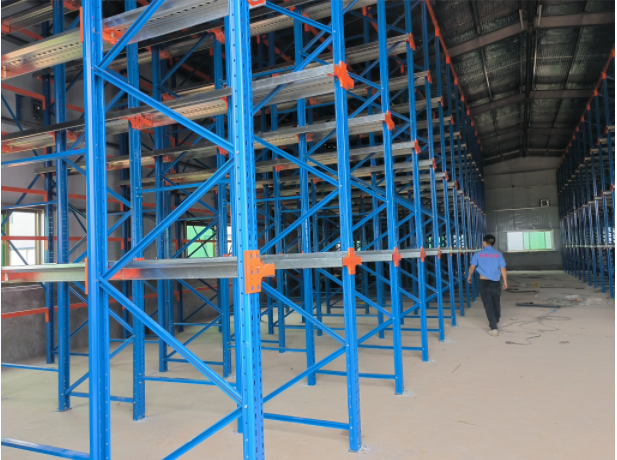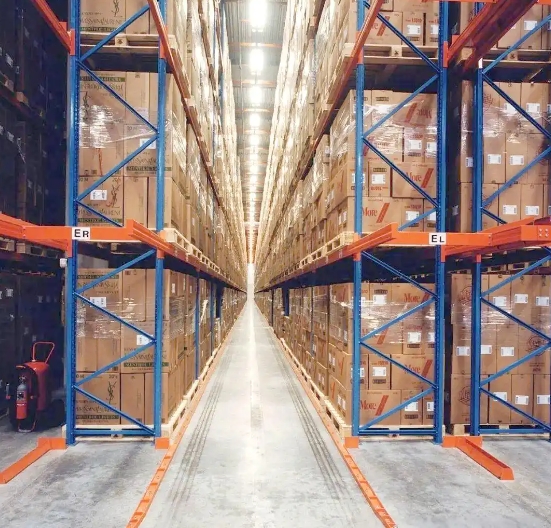When it comes to optimizing a warehouse for maximum efficiency and organization, few elements are as critical as the storage system itself. At the heart of most operations are industrial warehouse storage shelves. These structures are far more than simple metal frames; they are the backbone of logistics, inventory management, and overall workflow. Selecting the right system is a strategic decision that impacts everything from employee safety to bottom-line profitability. This article delves deep into the world of industrial warehouse storage shelves, exploring their various types, materials, design considerations, benefits, and best practices for selection and maintenance.

Not all storage needs are created equal, and thankfully, there is a wide array of shelving systems designed to meet diverse requirements. The choice depends heavily on the nature of your inventory, available space, and retrieval methods.
One of the most common and versatile types is selective pallet racking. This system allows direct access to every single pallet stored, making it ideal for warehouses with a high SKU count where any product might need to be retrieved at any time. Its simple structure consists of vertical frames and horizontal beams, creating multiple levels of storage.
For operations prioritizing high-density storage over immediate access to all goods, drive-in or drive-through racking is a superb solution. These systems eliminate aisles by allowing forklifts to drive directly into the rack structure to place and retrieve pallets. They are perfect for storing large quantities of similar products with low SKU variety, such as seasonal items or raw materials.
Another high-density option is push back racking. This system uses carts on inclined rails nested within the rack structure. Pallets are loaded from the front, pushing the previously loaded pallets back. When a pallet is retrieved, the next one moves forward automatically. It offers better selectivity than drive-in systems while still maximizing cube utilization.
For smaller, lighter items that are not palletized, shelving units or mezzanine floors equipped with smaller shelves are indispensable. These are often used for storing parts, tools, or order-picking for small goods, integrating seamlessly with larger pallet racking systems in a facility.
The durability and safety of industrial warehouse storage shelves are paramount, and they are directly tied to the materials used and the quality of their engineering. The overwhelming material of choice is steel, prized for its exceptional strength-to-weight ratio and durability.
Most high-quality systems are constructed from structural steel or rolled steel. Structural steel is typically thicker and formed into stronger shapes like I-beams, making it suitable for the ultra-heavy-duty applications found in selective pallet racking. Rolled steel is often used for lighter-duty applications but still offers significant strength. The steel is usually treated to resist corrosion; a common method is powder coating, which provides a tough, durable finish that protects against scratches, chips, and rust, ensuring a long lifespan even in demanding environments.
The engineering design is equally critical. Reputable manufacturers design their systems to comply with rigorous international standards. Key components like beams are equipped with safety locks that securely snap into the upright frames, preventing accidental dislodgement. The design also accounts for seismic activity and the potential impact from material handling equipment, ensuring structural integrity under various stress conditions.

Choosing the right type of shelving is only the first step. Properly designing the layout and specifying the configuration is what unlocks true efficiency. Several factors must be meticulously calculated.
First, load capacity is non-negotiable. This includes both the uniformly distributed load capacity per level and the overall capacity of the entire system. Exceeding these ratings is extremely dangerous. Accurate data on the weight and dimensions of your pallets or storage bins is essential for correct specification.
Second, the dimensions of the stored goods and the equipment used dictate the system's layout. The height, width, and depth of pallets determine the beam length and vertical spacing. Furthermore, the type of forklift or order-picking equipment used defines the required aisle width. Narrow-Aisle (NA) or Very-Narrow-Aisle (VNA) forklifts can operate in tighter spaces, allowing for more dense storage configurations compared to standard counterbalance forklifts.
Third, consider future flexibility. Business needs change. A well-designed storage system should be adjustable and scalable. Look for systems where beam heights can be easily reconfigured without disassembling the entire structure. This adaptability allows you to accommodate different product sizes and optimize space as your inventory profile evolves.
Investing in the right industrial warehouse storage shelves yields a significant return on investment through multiple channels. The most obvious benefit is the maximization of available space. By utilizing vertical cube space effectively, you can store more inventory within the same footprint, potentially delaying or eliminating the need for a costly facility expansion.
This organization directly translates to enhanced operational efficiency. A logical, well-planned layout minimizes travel time for workers and equipment, speeds up both put-away and picking processes, and reduces the chances of errors. When items are easy to find and access, order fulfillment rates and accuracy improve dramatically.
Furthermore, robust and properly installed shelving is a cornerstone of workplace safety. It securely contains heavy loads, reducing the risk of collapsing shelves and fallen goods. Clear aisles and organized storage also minimize trip hazards and create a more predictable workflow for forklift operators, preventing accidents and creating a safer environment for all employees.
The process of implementing a new shelving system requires careful planning. Start with a thorough analysis of your current and anticipated future inventory. Measure your items, weigh your pallets, and map your warehouse space accurately. Many suppliers offer expert space planning and design services to help you create an optimal layout.
Professional installation is highly recommended. Certified installers have the experience and tools to ensure the structure is perfectly level, plumb, and securely anchored, guaranteeing its rated capacity and safety. DIY installation can lead to catastrophic failures.
Once installed, a regimen of proactive maintenance is crucial. This includes regular inspections for any signs of damage, such as dents, cracks, or rust, particularly on the critical load-bearing components. Beams and connectors should be checked to ensure they are secure. Immediately address any damage and never exceed the stated weight capacities. Employee training on safe loading and unloading practices around the racks is also a vital part of a maintenance program.
In conclusion, industrial warehouse storage shelves are a fundamental investment that dictates the rhythm and capability of your entire operation. By understanding the different types, emphasizing quality materials and engineering, carefully planning the design, and committing to proper maintenance, you can build a storage infrastructure that is not only strong and safe but also a powerful driver of efficiency and growth for your business.
 Wechat
Wechat
 Whatsapp
Whatsapp